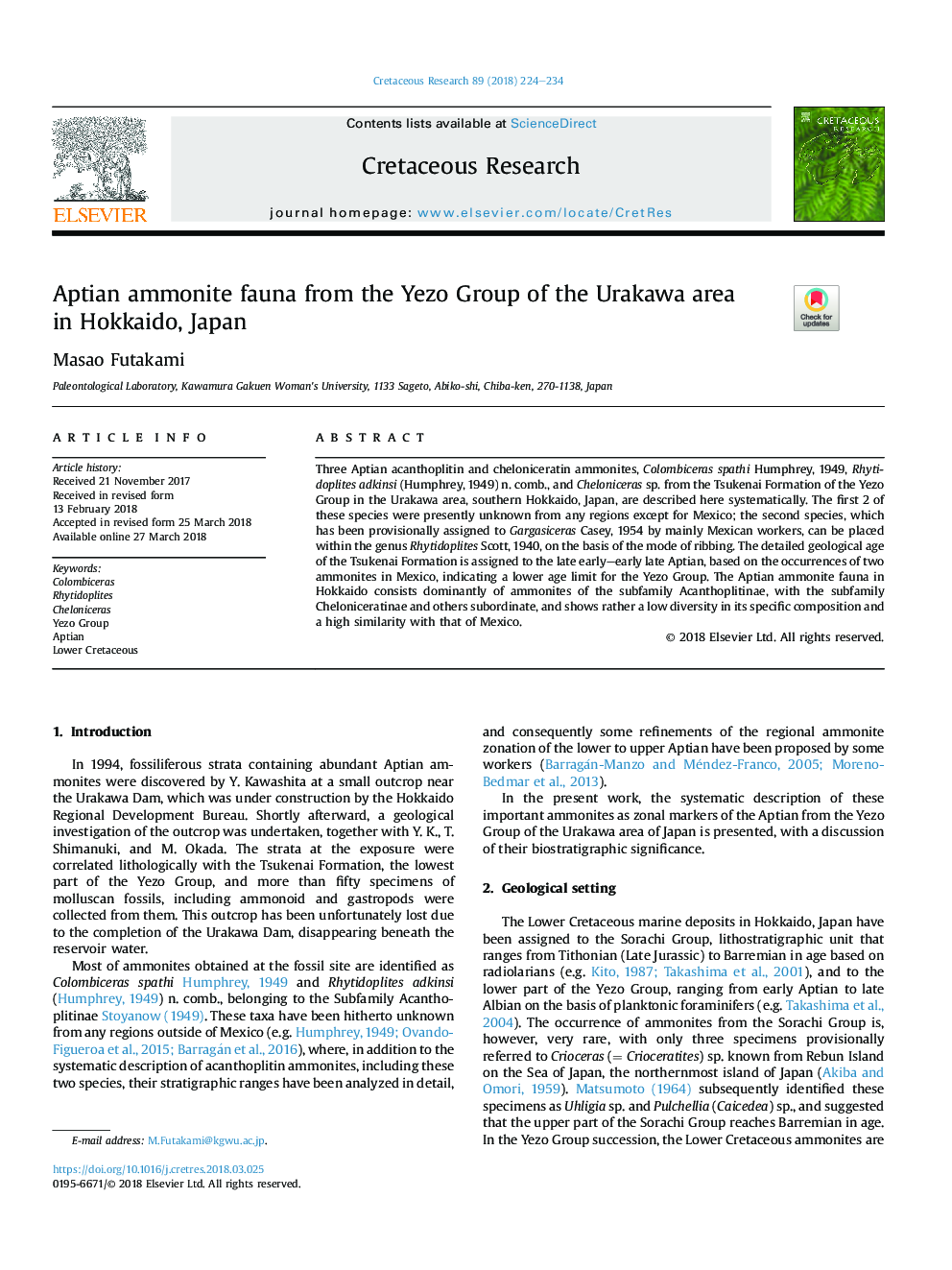| Article ID | Journal | Published Year | Pages | File Type |
|---|---|---|---|---|
| 8916235 | Cretaceous Research | 2018 | 11 Pages |
Abstract
Three Aptian acanthoplitin and cheloniceratin ammonites, Colombiceras spathi Humphrey, 1949, Rhytidoplites adkinsi (Humphrey, 1949) n. comb., and Cheloniceras sp. from the Tsukenai Formation of the Yezo Group in the Urakawa area, southern Hokkaido, Japan, are described here systematically. The first 2 of these species were presently unknown from any regions except for Mexico; the second species, which has been provisionally assigned to Gargasiceras Casey, 1954 by mainly Mexican workers, can be placed within the genus Rhytidoplites Scott, 1940, on the basis of the mode of ribbing. The detailed geological age of the Tsukenai Formation is assigned to the late early-early late Aptian, based on the occurrences of two ammonites in Mexico, indicating a lower age limit for the Yezo Group. The Aptian ammonite fauna in Hokkaido consists dominantly of ammonites of the subfamily Acanthoplitinae, with the subfamily Cheloniceratinae and others subordinate, and shows rather a low diversity in its specific composition and a high similarity with that of Mexico.
Keywords
Related Topics
Physical Sciences and Engineering
Earth and Planetary Sciences
Palaeontology
Authors
Masao Futakami,
